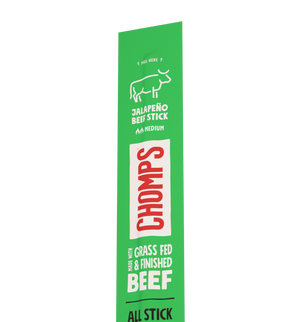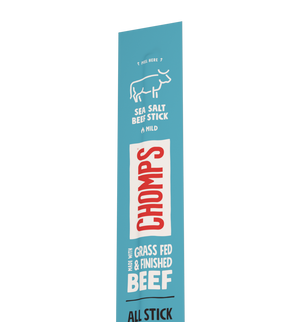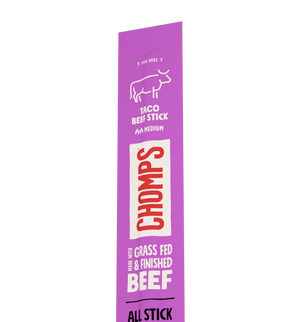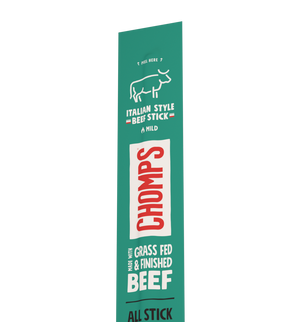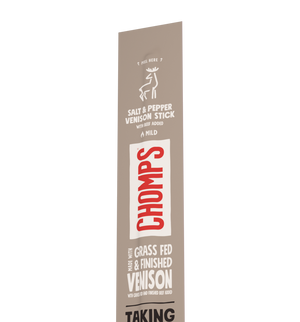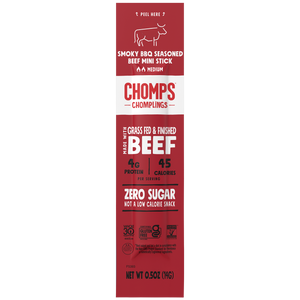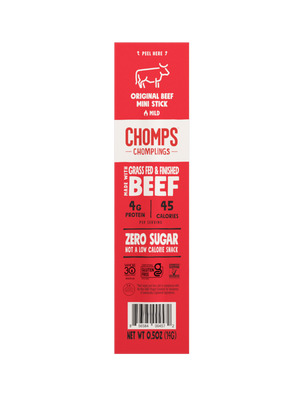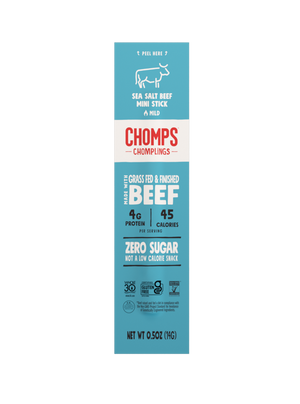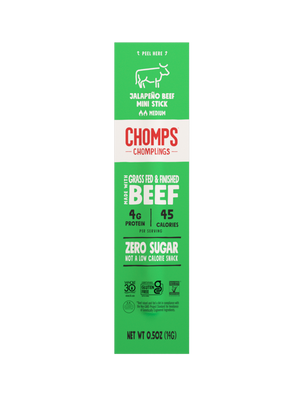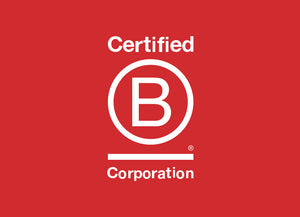Healthy snacks have become all the rage recently. And according to recent reports, the healthy snacks market is expected to grow into a $32 billion industry by 2025.
Increasing awareness regarding the benefits of healthy eating is a key trend driving the healthy snacks market.
Specifically, biltong has recently garnered the attention of the masses.
Many people commonly mistake biltong for jerky. While both are extremely healthy snacks, there are various key differences that are worth noting.
In this article, you'll get the inside scoop on:
- What is biltong
- The history of biltong
- Key differences between biltong and jerky
- Biltong nutrition facts
- Why you should eat biltong in moderation
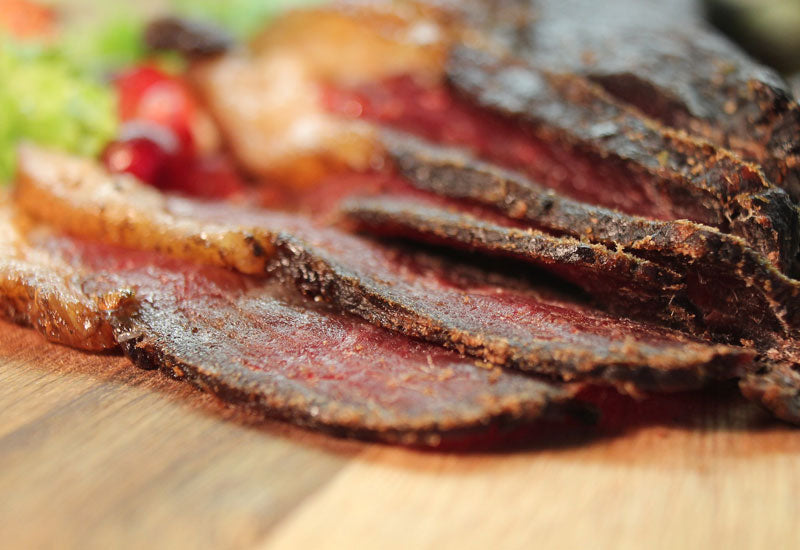
What is Biltong?
Biltong is a cured meat snack just like jerky. Various types of meat are used during production ranging from beef, game meats and fillets of meat.
The most common ingredients of biltong include:
- Meat (most commonly, beef)
- Black pepper
- Coriander
- Salt
- Vinegar
While it may seem almost identical to jerky, later on in this article you'll find out that there are several differences including taste, production process, and ingredients used.
The History of Biltong
While jerky originated in North America, biltong came from South African countries like Zimbabwe, Namibia, Botswana, and Zambia.
The indigenous people of these countries preserved meat by slicing it into strips, curing it, then hanging it up to dry. European seafarers also used to preserve meat for long journeys following a similar approach.
The antimicrobial benefits of certain spices have also led to the popularity of biltong since ancient times. Spices like coriander, cloves, and peppers have been shown to kill various bacteria when consumed. [1]
Nowadays, biltong is sold all over the world as a healthy meat snack alternative to traditional carb-heavy snacks.
Key Differences Between Biltong and Jerky
Biltong is typically softer, slightly more flavorful, and usually has a higher fat content — whereas jerky is a little bit drier, smokier, and made with leaner cuts of beef which makes it higher in protein.
Many people commonly mistake biltong and jerky for each other. That's because, at first sight, they look very similar to each other. But as you're about to find out, appearance is one of the only commonalities between these two meat snacks.
Here are the main differences between these two delicious meat snacks:
1. Biltong and Jerky Taste Differently
There's no clear winner when it comes to taste, both beef jerky and biltong are mouth-wateringly delicious. With that said, they do taste noticeably different.
The spices and vinegar used during production add a little extra flavor to biltong. Whereas jerky has more of a smoky and drier taste to it.
In addition, jerky typically contains less fat which contributes to its slightly drier taste. Biltong, on the other hand, has a higher fat content, contributing to its juicier flavor.
But that doesn't mean all biltong products are high in fat. Instead, biltong can have a slightly more diverse flavor profile because you can make it drier with less fat or more soft and chewy by using fattier meats.
2: Biltong and Jerky Contain Different Ingredients
Both meat snacks use a flavorful blend of spices to enhance the taste. But that's about the extent of their similarities when it comes to the ingredients used.
Biltong relies heavily on vinegar as its method of preservation. Then, salt and spices are added together during the drying process. Common African spices used in biltong include coriander, allspice, curry, and clove.
As the biltong industry grows, variations of ingredients included are expanding. A few other increasingly common add-ins include Worcestershire sauce, brown sugar, chili peppers, garlic powder, and onion powder.
Jerky typically doesn't use vinegar during production. Since jerky uses heat from a dehydrator or oven, it relies on sauces and flavoring agents containing sugar and salt to increase the flavor.
Another commonality is that beef is the meat most commonly used for both biltong and jerky.
The beef used in biltong is typically from thicker cuts of meat and takes a longer time to dry. Whereas jerky is almost always made from very lean cuts of beef.
In addition, biltong is usually cut into wider strips that are easier to hang dry compared to jerky where the meat is thinly sliced into smaller pieces to make it more suitable for cooking.
3: Biltong and Jerky Production Processes Differ
One of the biggest differences between jerky and biltong is how they're made.
To make biltong: meat is usually left overnight (and sometimes longer) in a vinegar and spice-based solution. Once the meat is cured, it's air-dried in the absence of heat. Finally, it's cut into thick pieces or thin strips and packaged or served as is.
To make jerky: meat is first sliced into strips then dried on a rack in a dehydrator or cooked in an oven for up to 12 hours. This often results in drier, tougher pieces of meat compared to biltong. Most jerky is soaked in sweet marinade and salt to help it stay tender and flavorful.
4: Biltong and Jerky Both Have a Unique Texture
The final difference is its texture. Biltong in its most basic form is a dried steak. This opens up the opportunity for people to enjoy biltong wet (or rare), medium, or well-done (hard).
Conversely, jerky uses heat from a dehydrator or an oven to make which means the texture is usually a bit drier than biltong and doesn't have as much variety as biltong. Most jerky products are chewy and tough.
Biltong Nutrition Facts
Biltong's claim to fame is largely due to its healthy nutrient content compared to common snacks like chips and cookies. Dried beef, in general, is a great source of various essential micronutrients like B vitamins, potassium and magnesium. [2]
It's low in carbs and high in protein which makes it a great snack for people following a Paleo, Ketogenic or low-carb diet. It also contains a healthy dose of iron, which is a nutrient that many people are commonly deficient in. [3]
While the exact nutritional value depends on the brand you choose, the average 28 gram serving of beef biltong comes out to:
- Calories: 80
- Protein: 16 grams
- Carbohydrates: 1 gram
- Fat: 2 grams
- Iron: 35% of daily value
- Sodium: 19% of daily value
Biltong and Jerky are Two Great Healthy Snacks
There are a few main differences between biltong and jerky. If you're choosing between these two meat snacks, the one you will enjoy most comes down to your personal preference in taste, texture as well as your health goals.
Biltong is typically softer, slightly more flavorful and usually comes with higher fat content. Whereas jerky is a little bit drier, smokier and made with leaner cuts of beef which makes it higher in protein and contains fewer fat calories.
You can't go wrong choosing between biltong or jerky as your go-to healthy snack. We recommend giving your taste buds the chance to try both and see which you like best.
Resources:
[1]“Coriander Oil Could Tackle Food Poisoning and Drug-Resistant Infections. ScienceDaily, 2011.
[2] Habte, Kifle et al. “Nutrient Density and Microbial Safety of Open-Air-Dried Beef Meat and Its Biochemical and Organ Histopathology Effects in Albino Rats: A Promising Ingredient for Complementary Food Formulation.” International journal of food science vol. 2023 2202312. 21 Feb. 2023.
[3] AIR-DRIED SLICED BEEF. April 1, 2019.


